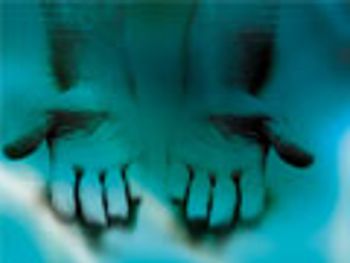
Waters Application Note

Waters Application Note

Agilent Application Note

Access to a comprehensive source of certified reference materials in various forms - powders and solutions - is vital for clinical and forensic laboratories, to ensure the correct identification of substances and the accuracy of results, and there is an increasing customer demand for ISO Guide 34:2009 certification. Jenny Button, Product Specialist, LGC Standards, UK, discusses certified reference materials and the importance of ISO Guide 34 to both manufacturers and end-users.

Human beings have long consumed mind altering drugs to attain a euphoric high. These illegal drugs are obtained directly from natural substances including plants or they are chemically synthesized. Monitoring consumption of abused drugs is important in workplace settings, crime scene investigations, forensic toxicology and other related areas.

CE–MS using noncovalent coated capillaries provides advantages for purity and stability analysis of biopharmaceuticals.

LC–MS and CE–MS are the go-to techniques for characterizing biologics, but often help is needed from a range of other methods.

Automated column and mobile phase screening is the current trend in the pharmaceutical industry to develop chiral methods. This study presents comprehensive strategies for automated rapid chiral HPLC method development including normal-phase, reversed-phase and polar organic phase separation modes.

The growing importance of biotherapeutics to the pharmaceutical industry has created an increasing demand for protein analysis techniques with high precision, high sensitivity and high throughput.

Phenomenex Application Note

Wyatt Application Note

Thermo Scientific Application Note

Thermo Scientific Application Note

Capillary electrophoresis (CE) with a UV photo-diode array (DAD) detector was used in a new method to detect the assay of amlodipine besylate (AML) and atorvastatin (ATO) in pharmaceutical formulations and human plasma.

Liposomes are made of lipid bilayers and are often used in drug delivery by encapsulating the core with therapeutic drugs. During liposome research, formulation, manufacturing, and quality control, it is of great importance to monitor liposome size and encapsulation.

A liquid chromatography tandem mass spectrometry method for enalapril and enalaprilat from human plasma has been developed using Thermo Scientific SOLA cartridges. Sample preparation is fast, efficient, and reproducible giving excellent recovery levels for each compound.

Using a novel new-design monolithic silica column (Chromolith? HighResolution RP-18e), fast, high resolution separations were achieved for various drug mixtures without the high pressures characteristic of modern particulate technology.

Tetracycline (TC), a common antibiotic used to treat urinary tract infections, acne, gonorrhea, and other conditions, yields a toxic degradation product, 4-epianhydrotetracycline (EATC). General Chapter 226 of the U.S. Pharmacopeia and National Formulary (USP-NF), referred to by monographs for epitetracycline and drug products containing tetracycline hydrochloride (TC-HCl), prescribes an antiquated assay for EATC impurity in TC.

For PAT, you need to choose the right analytical methods. Here's how.

Waters Application Note

Waters Application Note

A discussion of how UHPLC is used to conduct intact protein–antibody analysis and glycoprofiling to characterize biopharmaceutical drugs

The development and commercialisation of new medical drugs is a complex and costly process, but increasing pressure is being placed on drug companies to accelerate the timeline from discovery of new drugs, through to clinical trials and then to their release onto the market. The pharmaceutical industry continues to demand ever more advanced products aimed at improving health and the quality of modern-day life.

Janet Kelsey of The Column spoke to Frédéric Cheviron, Sales & Marketing Manager for Chiral Technologies Europe, about the technology they use in drug development and how companies can improve their method development.

The design of strategies to reduce the activity of residual silanols in conventional alkyl-bonded columns is still one of the main challenges in the current separation of basic compounds by reversed-phase liquid chromatography.
